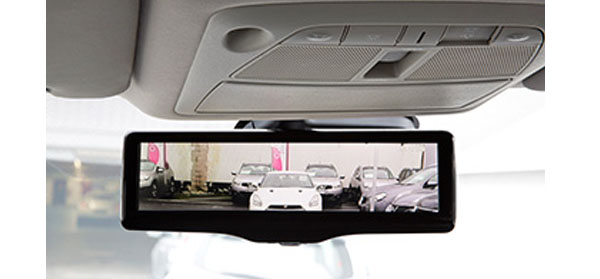Nissan is combining a rear video camera with a traditional rear view mirror for a futuristic safety tool.
It’s “Smart” mirror lets you switch easily between a typical mirror and a camera feed when you’re view in the back is obstructed. Watch the video here.
The system uses a 1.3 megapixel rear-view video camera that sends video to an LCD hidden in the mirror. If something in your back seat is blocking rear visibility, you can switch to video mode and get a clear, unobstructed view of the traffic behind you.
The camera mode also gives you a wider and clearer rear view with less glare, says Nissan. So if headrests or C-pillars block your view, you can see around them. And it’s also helpful in rain, snow or weather conditions that block visibility.
Nissan will offer the technology this spring in Japan as a dealer option and elsewhere in 2015, but laws in the U.S. will likely prohibit the technology from reaching our shores. JVC Kenwood and others showed video systems at CES that replaced side view mirrors with side cameras that fed video to the mirror. But we are told U.S. laws are obsolete and need to catch up with technology.
The technology may allow Nissan to alter the design of its cars. “It also offers the possibility of new and exciting designs for our upcoming models because Smart rearview mirror is an alternative to a very wide rear window for good visibility. We’ll have the flexibility to create new shapes, and to further improve aerodynamics for better fuel efficiency,” said Andy Palmer, Chief Planning Officer and Executive Vice President of Nissan.
Nissan’s mirror uses a “specially-shaped LCD monitor.” It explained, “Matching a standard wide angle camera lens to this unique monitor could not be done since the images from the camera, when adjusted to the special monitor size, produced a low-resolution image resulting in an insufficient picture quality. To rectify this challenge, a 1,300,000 pixel narrow-angle camera was developed so that picture quality would not be sacrificed when formatted for the specially designed monitor.”
The monitor also forgoes the usual 4:3 or 16:9 aspect ratio and uses a 4:1 ratio.
The technology is particularly useful in race cars where its important to see the cars around you. Audi used similar technology last year on its Le Mans race car and Nissan will use it in its ZEOD RC.









